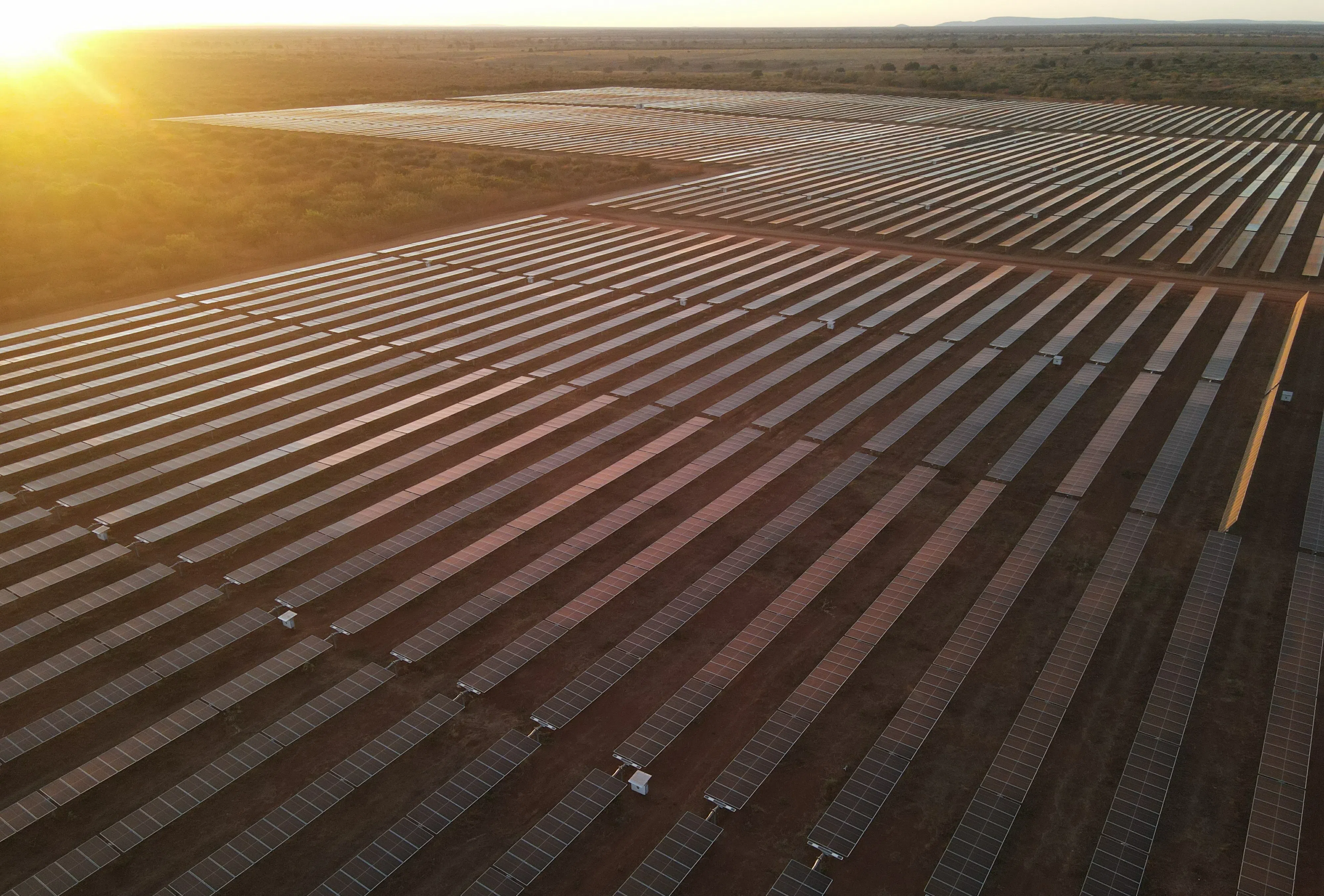Making sustainable gains: How green investments in emerging economies can drive long-term growth
As developing nations accelerate their clean energy transition, asset manager Brookfield shares avenues for investors to harmonise climate impact with financial returns
Charlotte Kng YT
CLIMATE change may well be the world’s most expensive problem.
Rising sea levels, warmer temperatures and more frequent natural disasters are causing global damage that may be irreversible.
While investments to cut carbon emissions are increasing, they are not reaching the places that need them most – emerging markets and developing economies (EMDEs).
EMDEs, which include countries Brazil, Chile, India, and Indonesia, contribute up to 72 per cent of global emissions, presenting both challenges and opportunities for investors who want to drive sustainable change.
India is a prime example. In the past decade, India has connected 50 million citizens each year to electricity to modernise their lifestyles and lift them out of poverty. Yet, India’s rapidly growing energy demand has made it the world’s third-largest polluter, responsible for 7.4 per cent of global emissions in 2022, according to the International Energy Agency (IEA).
Under Prime Minister Narendra Modi, India aims to achieve net-zero emissions by 2070, potentially reducing global warming by 0.2 deg C. By 2030, India wants to deploy 500 gigawatts of renewable energy, enough to power 200 million homes.
How can India achieve its 2030 renewable energy goal when solar, hydropower, and nuclear currently make up just 10 per cent of its energy mix? Estimates suggest India will need to invest US$10 trillion (S$13 trillion) – roughly $214 billion annually – to build the green energy infrastructure required by 2070.
For investors, the energy transition in India and other EMDEs offers both attractive returns and the chance to make a positive climate impact.
Where renewable energy investments in these regions were once seen as risky, shifting policies and market conditions have made them more viable and lucrative.
Growing interest in energy transition
Governments in EMDEs are increasingly introducing policies to encourage renewable energy projects. Chile plans to decommission all coal plants within the next 15 years. Vietnam rolled out generous feed-in tariffs that drew $44 billion in investment for solar and wind power projects in just four years.
Meanwhile, multinational companies in EMDEs are increasingly seeking clean energy to meet sustainability goals. Technological advances have made renewable energy solutions more affordable than fossil fuels, further driving this shift.
New financial mechanisms, such as catalytic capital, are helping to de-risk investments and make them more attractive for private investors. In a catalytic arrangement, an early investor – such as impact investment funds – limits their own return to boost potential profits for others. By doing so, it encourages private capital to invest in projects or sectors that might otherwise struggle to secure financing due to perceived risks.
The effect of these changes can be seen in the successful rollout of the Bhadla Solar Park project in the Thar Desert, north-western India.
Bhadla Solar Park is one of the largest solar farms in the world and produces 2.7 gigawatts of energy, enough to power 5.5 million homes. It only exists because the Climate Investment Fund (CIF) brought together development banks and the private sector investments to kickstart the construction.
Initially, demand for Bhadla’s power was slow, but it has since ramped up as more companies in India seek renewable energy sources. This demonstrates why it pays for investors to get into EMDE energy transition early.
Investing in emerging markets

Investors seeking green investment deals in the EMDE markets can benefit from being first movers in a multi-trillion dollar opportunity.
Rapid population growth and industrialisation are driving energy demand, and EMDEs are rich in untapped renewable resources like solar, wind, and hydro. Countries like India and Brazil, and regions like South-east Asia have optimal natural conditions, such as high solar irradiance and strong wind currents, which can make renewable projects highly productive.
In Brazil, for example, the cost of producing onshore wind power is less than half of the cost of wind power captured at sea (offshore wind). Also, the cost of land, labour, and construction is generally lower in EMDEs compared to developed markets.
However, EMDEs present complex challenges, including regulatory uncertainty, grid access complications, and higher capital costs. Investors must navigate these challenges and partnering with experienced asset managers helps to mitigate risks.
Investments with an impact
Asset manager Brookfield manages a substantial portfolio of renewable power assets, overseeing 34 gigawatts of capacity across five continents. With local expertise and hands-on management, it navigates regulatory challenges, secures funding, and delivers large-scale renewable projects, seeking attractive risk-adjusted returns.
As both an investor and owner-operator, Brookfield has “skin in the game” as it invests alongside partners and creates long-term value. Its global reach, deep knowledge, and strong ties with public and private institutions all provide access to top-tier renewable projects.
Brookfield’s impact is significant in EMDE markets. In India, it manages $3 billion in assets, and plans to expand to $10 billion within four years. In Brazil, its platform Elera Renovaveis oversees 93 facilities.
The firm recently rolled out the Catalytic Transition Fund, which will be one of the world’s largest dedicated transition funds for EMDEs if the $5 billion target is achieved. The fund has attracted investors such as Alterra, CDPQ, GIC, Prudential and Temasek.
Mark Carney, chair and head of Transition Investing at Brookfield Asset Management, says: “The Catalytic Transition Fund is a private market solution to the global challenge of delivering transition investment to emerging markets.
“Brookfield is already a leading transition investor in these regions and has first-hand knowledge of the incredible opportunity and impact that is available in these chronically underfunded markets. Having this dedicated capital for emerging markets will complement our existing Brookfield Global Transition Fund strategy and further accelerate the growth of clean energy and transition investments in the future.”
As global temperatures continue to rise, EMDE countries are racing to meet net-zero goals. The urgency is clear, and so is the opportunity for investors to contribute to a sustainable future.
Learn more about supporting transition investments in emerging markets.
Inside Brookfield’s transition investing strategy
Brookfield is a leading multinational alternative asset management company with over 100 years of expertise. Since 2020, the company has been refining its renewable power and transition investment strategy to seek compelling, risk-adjusted returns for investors. The firm currently owns and operates 34 GW of renewable power worldwide and has a pipeline of 200 GW. It plans to commission 8 to 10 GW of renewable power assets annually for the rest of the decade.
Brookfield’s record-breaking US$15 billion (S$ 19.6 billion) Global Transition Fund (BGTF I) focuses on three key pillars:
- clean energy infrastructure
- sustainable solutions
- business transformation
The firm is now raising capital for the Catalytic Transition Fund (CTF), targeting $5 billion to support emerging market transition investments.
With a $1 billion commitment from Abu Dhabi’s Alterra, CTF aims to be the world’s largest transition fund for emerging markets, focusing on South America, Asia-pacific (including Indonesia, Malaysia, Philippines, Thailand and Vietnam), and Eastern Europe.
Recently, Brookfield closed a landmark clean energy deal with Microsoft, committing to sell renewable power from 10.5 GW of capacity built exclusively for the technology company. This is the largest ever such deal to date, exceeding the previous record by more than eight times.
Disclaimers:
This article and the information contained herein are for educational and informational purposes only and do not constitute, and should not be construed as, an offer to sell, or a solicitation of an offer to buy, any investment advisory services, securities or related financial instruments. This commentary discusses broad market, industry or sector trends, or other general economic or market conditions. It is not intended to provide an overview of the terms applicable to any products sponsored by Brookfield Asset Management Ltd. and its affiliates (together, “Brookfield”).

Share with us your feedback on BT's products and services
